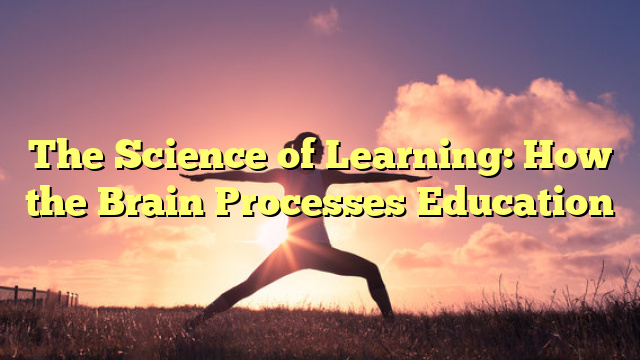Learning is a complex process that involves the brain's ability to acquire, process, and retain information. Understanding how the brain processes education can help educators optimize teaching methods and enhance student learning outcomes. In this article, we will explore the science behind learning and how the brain responds to various educational stimuli.
The Brain and Learning
The brain is a sophisticated organ that is constantly adapting to its environment. When we learn something new, our brain undergoes physical changes in its neural connections, a process known as neuroplasticity. Neuroplasticity allows the brain to reorganize itself in response to learning experiences, forming new neural pathways and strengthening existing ones.
When we engage in learning activities, such as studying, reading, or problem-solving, our brain processes information through a series of electrochemical signals that travel between neurons. These signals trigger the release of neurotransmitters, such as dopamine and serotonin, which play a crucial role in regulating mood, motivation, and memory.
Types of Learning
There are several types of learning that involve different areas of the brain. For example, rote memorization relies on the brain's ability to store and retrieve information from memory, while conceptual learning involves understanding complex concepts and applying them in novel situations.
Visual learning, auditory learning, and kinesthetic learning are also important aspects of the learning process. Visual learners benefit from visual aids, such as diagrams and charts, while auditory learners learn best through listening and speaking. Kinesthetic learners, on the other hand, prefer hands-on activities that engage their sense of touch and movement.
The Role of Emotions in Learning
Emotions play a significant role in learning, as they can impact our attention, motivation, and memory. When we are emotionally engaged in a learning task, our brain releases stress hormones, such as cortisol, which can enhance our focus and cognitive performance. Positive emotions, such as curiosity and excitement, can also boost our creativity and problem-solving abilities.
Conversely, negative emotions, such as anxiety and fear, can inhibit learning by impairing our ability to concentrate and retain information. It is important for educators to create a positive and supportive learning environment that fosters emotional well-being and encourages students to take risks and learn from their mistakes.
Conclusion
Understanding how the brain processes education is crucial for developing effective teaching strategies and promoting student success. By recognizing the importance of neuroplasticity, different types of learning, and the role of emotions, educators can create engaging and interactive learning experiences that enhance the brain's ability to acquire, process, and retain information.
FAQs
What is neuroplasticity?
Neuroplasticity is the brain's ability to reorganize itself in response to learning experiences, forming new neural pathways and strengthening existing ones.
How do emotions impact learning?
Emotions can impact learning by influencing our attention, motivation, and memory. Positive emotions can enhance cognitive performance, while negative emotions can inhibit learning.
What are the different types of learning?
There are several types of learning, including rote memorization, conceptual learning, visual learning, auditory learning, and kinesthetic learning.
Unlock Your Mental Potential



